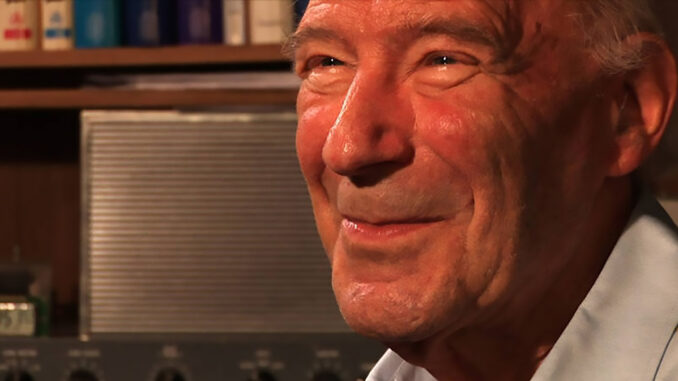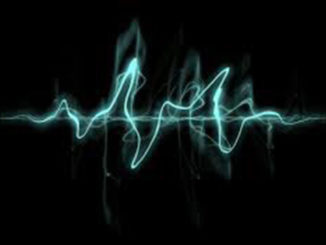
This is republished via the work of Anabela Cardoso and Gesa Dröge. The original PDF is available through Cardoso’s ITC Journal.
For those who are not aware, it is the eminent physicist Ernst Senkowski who coined the term Instrumental Transcommunication (ITC). ITC has had a fluid definition based upon the researcher using the term. I have tried to refine the definition of ITC over the years via ITC Voices articles and public lectures. Currently, my working definition of ITC is the following:
ITC, Instrumental Transcommunication, is the use of an instrument to record communication with disincarnate intelligences of an unknown origin. Any instrument used for ITC must be independent, impartial, and most importantly, provide a mechanism for any recorded communication to be independently reviewed.
– Tim Woolworth
Under this definition, forms of communication that are not independent such as mediumship, ouija boards, automatic writing and the like cannot be considered forms of ITC. Some forms of ITC, such as ghost boxes, direct radio voice, steam, water images, etc. which do not have innate recording mechanisms can be reviewed due to the output of these methodologies being recorded via video and/or audio.
The brilliant words written below by Senkowski reflect his decades of experience observing and writing about ITC. He aptly sums up these observations over a series of brief points. If you are interested in reading more of Dr. Senkowski’s work, we have his book available for you to read in our library. This version of the book was translated chapter by chapter by Heidemarie Hallmann and posted as HTML files; these files were assembled into a full document PDF by Tim Woolworth in 2015.
We cannot thank Anabela and Gesa enough for their work on this document. It is a very important piece of ITC history.
And now, on to the words of Anabela Cardoso:
Forward:
It is a real pleasure and an honour to publish in our website one of Professor Ernst Senkowski’s last written documents on the fascinating issue of EVP/ITC.
As our readers well know, Professor Senkowski, together with Dr. Eng. Carlo Trajna, was the scientist who most thoroughly researched our field of interest and study, ITC.A physicist and a successful EVP operator himself, he closely accompanied the work of the most remarkable ever ITC operators, namely Adolf Homes and the couple Harsch-Fischbach, among others.
When I started my own ITC work at the end of the 1990s, I was privileged to count on his knowledge, support and friendship. His help during that time of confusion and doubts was invaluable. From then on Ernst Senkowski was my permanent counsellor and skilled guide. His encyclopaedic knowledge andinformation never failed me until the last months of his life among us.
I will be forever grateful to this wise, intelligent and kind man for all he generously gave me. My work would not have been the same without his enlightened guidance and assistance.
Anabela Cardoso
EVP/DRV/ITC – A statement by an Old-Timer
Dr. Ernst Senkowski
The interactions of complex systems are determined by their constitution. Dogmatic structures inhibit development.
It is not sufficiently known that ‘science’ is a human belief system that has been artificially constructed on a questionable basis. ‘Objectivity’ is agreed upon an epochal combination of subjective experiences conditioned by language and culture. Exact replication of an effect is impossible. Anomalies challenge the current convictions. Their existence is denied, their protagonists are denigrated. EVP/ITC (Electronic Voice Phenomena – Instrumental Transcommunication) is a special case of this attitude: its existence is not accepted by the scientific establishment. Sixty years of fruitless discussion of the (intersubjective) ‘reality’ and correct interpretation of the ‘extraordinary voices’ can be illuminated by a few remarks derived from long-time direct and indirect personal observation.
Like any sensory perception the EVP/ITC phenomena must be decoded or interpreted by the human receiver to be ‘understood’. This is primarily a subjective process. In the case of acoustic signals the net result depends upon several conditions including the inherent time depending psycho-acoustic faculties of the listener and the ‘quality’ of the signals. It is completely normal that disturbed signals with a poor signal-to-noise ratio overstrain the complex process and trigger different interpretations by different listeners and even by the same listener at different times.
1 At least three experimenters found a group of characteristic properties of the EVP independent from the languages- English (Mac Rae), Italian (Carlo Trajna), German (Ernst Senkowski). This shows a ‘hard core’ of the phenomena.
2 Many voices have been documented which were completely understandable and could be successfully identified subjectively and by sophisticated computer software with the lifetime voice of a named deceased person.
3 EVP examples show a mean duration of around 1,5 sec which differentiates them from normal sentences. The longer a presumed paranormal passage the smaller becomes the probability of its misinterpretation. Most EVP appear spontaneously, but some are immediate intelligent reactions answering a request of the experimenter. They render the impression of autonomous ‘speakers’. This effect excludes the chance hypothesis in the case of radio background. Misinterpretation of terrestrial speech signals is avoided by using ‘white noise’.
4 A continuous changeover from EVP to DRV (Direct Radio Voices) has been observed: During EVP experiments some voices could be immediately understood from the loudspeaker and confirmed in replay of the tape. Fluent dialogues with DRV may last several minutes and completely exclude illusion, hallucination or perceptual restoration.
5 The genuineness and paranormality of the voices is supported by the documentation of visual anomalies showing recognizable faces of deceased humans on TV and monitor-screens, as well as by extraordinary computer texts appearing practically without errors, allowing no reasonable discussion of subjective misinterpretation. Some images and texts stood in connection with voices.
6 A sub-group of extraordinary voices comprises those on telephones. Studying the work of Rogo and Bayless ‘Phone Calls from the Dead´(1979) is strongly recommended. More recently voices of a dead youngster on his former mobile phone have been observed.
7 The phenomenon of the ‘Independent Direct Voice’ radiated from a ‘materialized voice-box’ in free air (f.i. at Leslie Flint: ‘Voices in the Dark’ 1971) should be seriously considered – as well as OBE, NDE, hearing ‘internal voices’ and the unsolved mystery of ‘creativity’.
8 EVP are not singular in suggesting the existence of other levels of consciousness. Disregarding the complete ITC complexity and its importance for the life-after-death question because of the possible misinterpretation of EVP is not a scientific attitude.
December 2011




Be the first to comment